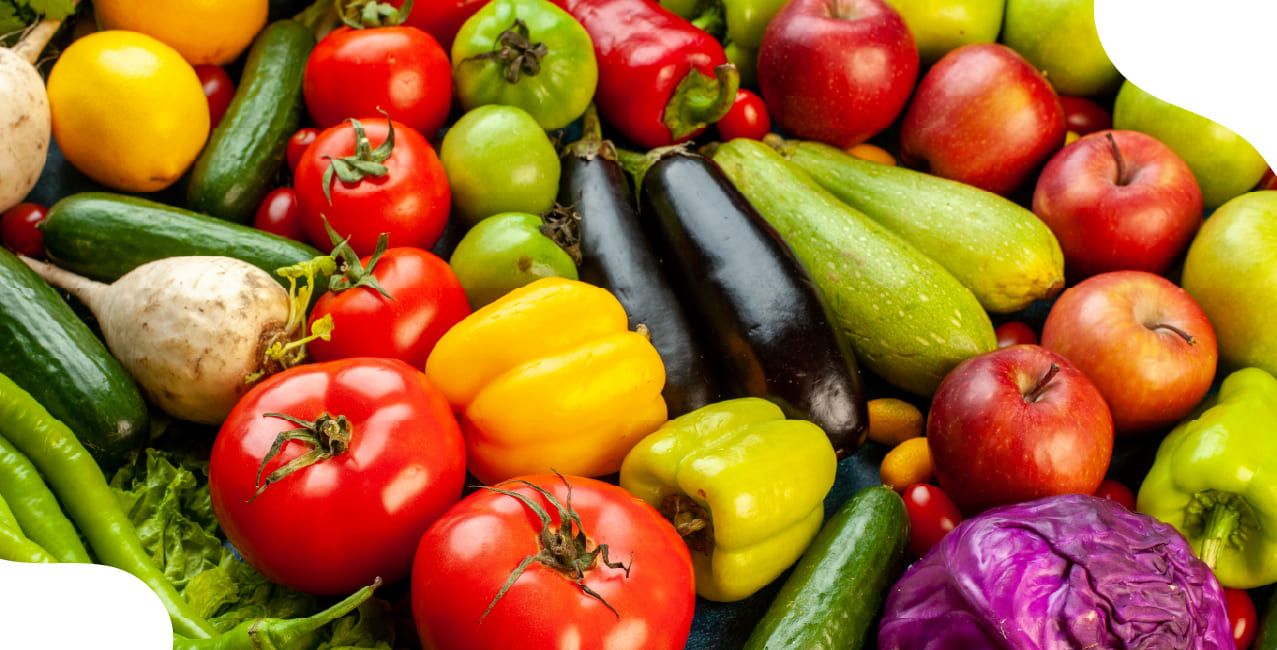
Author
LoansJagat Team
Read Time
6 Min
24 Sep 2025
GST on Vegetables: Complete Guide to Rates & Exemptions
Key Takeaways
- GST on vegetables is 0% for fresh, unpacked items and 5% for packed or processed ones. This structure remains unchanged in 2025.
- Businesses can claim input tax credit only on the GST paid for processed vegetables, not for fresh ones.
- Retailers must split billing and apply GST correctly based on packaging. Errors may attract penalties and audits.
- Tech and fintech platforms must align their systems to auto-detect taxable vs. exempt vegetables during billing.
BONUS: THE NEW GST UPDATE MERGES THE OLD MULTI-RATE SYSTEM INTO TWO SLABS, 0% FOR ESSENTIALS LIKE FRESH VEGETABLES AND 18% FOR MOST OTHER GOODS.
GST on vegetables means the tax applied to fresh, packed, or processed vegetables under India’s Goods and Services Tax system.
Arun owns a vegetable supply shop in Nagpur. In August 2025, he made ₹4,80,000 in total sales. Out of this, ₹3,20,000 came from fresh, unpacked vegetables, and ₹1,60,000 came from frozen and canned vegetables.
Since the GST on vegetables is 0% for fresh items and 5% for processed ones, only ₹1,60,000 was taxable. Arun paid 5% GST, which came to ₹8,000. He claimed ₹6,000 as input tax credit because he had already paid GST on packaging and cold storage. His final tax payable was ₹2,000. This small GST expense made a big difference in his profit margin.
This blog explains the GST on vegetables in 2025, including tax rates, categories, who must pay, how much, and recent GST 2.0 updates.
GST on Vegetables: What Stays Exempt and What Doesn’t?
The tax on vegetables is important for both small sellers and large retailers. While some vegetables remain tax-free, others attract GST based on how they are processed or packed. The rates have not changed under the GST 2.0 reforms introduced in 2025, but it’s still essential to know which items are taxed.
The table below gives a clear breakdown of GST on vegetables depending on the type and treatment of the item:
This table helps us understand that GST on vegetables is still 0% for fresh items and 5% for processed or packed goods. No changes have been made under the 2025 GST reform, which means the current slabs continue to apply.
Read More – GST on Milk: Complete Guide with Rates & Exemptions
Why Fresh Vegetables Remain Tax-Free Under GST?
Fresh vegetables are considered essential food items in India. The government has decided to keep them free from GST so that prices remain low for the public. This also supports farmers and small vendors who do not need to worry about filing GST returns or adding tax to their sales. Let’s look at how this benefits both sellers and buyers.
Here are the Key Reasons for GST Exemption on Fresh Vegetables:
- Many low-income families depend on fresh vegetables for daily meals. No GST keeps their food budget affordable.
- For example, Priya’s family spends ₹1,500 every month on vegetables. Since there is no GST on vegetables that are fresh and loose vegetables, they save ₹75 every month compared to packed items.
- Fresh vegetables are mostly sold by farmers, local sellers, and street vendors. Exempting them from GST reduces the compliance burden.
- India’s food inflation remains under control because daily-use items like fresh vegetables, rice, and dal are tax-free.
The decision to exempt GST on vegetables in their fresh form helps the economy and everyday households. It lowers living costs and reduces paperwork for those who sell them.
When Is GST on Vegetables Applicable?
While fresh vegetables are exempt from tax, GST is still applied in some cases based on packaging, processing, or the nature of the sale. This creates a difference in pricing and invoicing for retailers, wholesalers, and businesses.
To understand when GST on vegetables is applied, let’s look at three typical use cases:
This table makes it clear that GST on vegetables depends on packaging and whether the item is considered ready-to-eat. Fresh vegetables stay tax-free, while processed, frozen, or canned ones attract 5% GST.
How GST on Vegetables Impacts Traders, Retailers, and MSMEs?
GST on vegetables is especially important for small traders and retailers who deal with both unpacked and packed vegetables. Their billing, tax payments, and profit margins depend on how GST is applied.
Let’s go through some real-life impacts in simple terms:
- A small grocery store owner like Rakesh sells both unpacked onions and packed frozen peas. He does not charge GST on onions, but must include 5% GST on frozen peas while billing.
- Retailers must issue separate invoices when selling a mix of fresh and packaged vegetables to avoid tax filing errors.
- For example, if Rakesh sold ₹40,000 worth of fresh items and ₹20,000 worth of frozen items, only the frozen part needs 5% GST, ₹1,000 in this case.
- Traders also need to know the correct HSN codes (like 0701 for fresh onions or 0710 for frozen peas) to avoid rejection during GST return filing.
In short, GST on vegetables is easy to handle for fresh goods, but becomes more technical for processed or packaged items. Businesses need to separate them clearly in their books.
How GST on Vegetables Affects ITC Claims for Businesses?
Supermarkets, cloud kitchens, and food tech companies, knowing how to claim input tax credit (ITC) on vegetables, can reduce total tax cost. ITC helps businesses recover the GST they paid while purchasing items like frozen vegetables or vegetable mixes.
The table below shows how a cloud kitchen can claim ITC for vegetables purchased:
This table shows that only GST paid on processed or packed vegetables qualifies for ITC. Fresh vegetables do not attract GST and hence don’t allow ITC claims. Knowing this helps reduce tax liability in food businesses.
Latest Changes in GST on Vegetables:
In 2025, the GST Council released reforms under the GST 2.0 update. While many changes were made in slab structures for other items, GST on vegetables remained unchanged. The council kept essential foods like vegetables, fruits, rice, and pulses either tax-free or in the 5% slab.
Let’s understand the highlights of the 2025 update.
- The GST 2.0 reform aimed to merge slabs, but vegetables retained their current tax rates, 0% for fresh and 5% for packed.
- No new GST was imposed on vegetable items. The focus was to avoid inflation in daily groceries.
- E-commerce platforms like Blinkit or BigBasket charge GST only on packaged vegetables, not fresh ones. For instance, a ₹120 frozen mix will attract ₹6 as GST, but loose cabbage costing ₹30 stays tax-free.
- The GST Council clarified that “ready-to-eat” vegetable products, such as vacuum-sealed meals, will continue to fall under the 12% or 18% slabs.
This update confirms that GST on vegetables has stayed stable in 2025, with no impact on the basic fresh produce market.
Also Read - GST on Food and Restaurants: Complete Guide with Rates & Impact
Common Mistakes in GST Filing Related to Vegetables:
Mistakes in GST filing may lead to notices, penalties, or even cancellation of registration. Many MSMEs dealing with vegetable supply chains struggle with incorrect billing or the use of wrong HSN codes.
The table below lists common errors and their possible penalties:
This table shows that the correct GST application is very important. Even a simple mistake in GST on vegetables, like charging GST on loose potatoes, can lead to penalties and legal trouble.
Impact of GST on Vegetables in Fintech & Retail Ecosystem:
The fintech and digital commerce ecosystem is also impacted by the rules of GST on vegetables. Apps, POS systems, and accounting platforms must be updated to differentiate between tax-exempt and taxable vegetable items.
Let’s explore how this affects businesses:
- Inventory software must correctly tag vegetable SKUs as taxable or exempt to auto-apply GST rates.
- For example, a POS at Reliance Fresh bills fresh carrots without tax but adds 5% GST on a ₹100 frozen veg pack (₹5 GST).
- Fintech payment apps like Paytm or PhonePe offering vegetable delivery must split invoices correctly to show exempt and taxable items.
- Accounting tools like Tally or Zoho Books need to auto-classify GST on vegetables to avoid GST mismatch during monthly filings.
This section proves that even though GST on vegetables may look simple, it has major implications in the backend of fintech, retail, and GST compliance software.
Conclusion:
The Goods and Services Tax (GST) system in India has kept a balanced approach when it comes to food. In 2025, GST on vegetables continues to remain unchanged. Fresh, loose vegetables are still exempt from any GST, while frozen, packed, or processed vegetables attract a 5% tax. This ensures basic food remains affordable for all, while processed goods are taxed fairly.
For businesses, knowing the difference helps with accurate billing and the correct use of input tax credit (ITC). With tools and tech support, both small and large retailers can now apply GST on vegetables properly, avoiding common errors and penalties. As India moves forward with GST 2.0, these clear tax rules provide much-needed stability in the vegetable supply chain.
FAQs:
1. How does GST on vegetables affect businesses using automated invoicing software?
Businesses must ensure that their invoicing software clearly separates GST-exempt (like fresh vegetables) and GST-applicable items (like frozen or packed vegetables). Failure to auto-classify these correctly can result in GST return mismatches and audits.
2. Are wholesalers required to charge GST on bulk shipments of mixed vegetables?
Yes, if the shipment contains pre-packed or processed vegetables, GST must be applied to those specific items, even in bulk. However, fresh, loose vegetables in the same consignment remain exempt. Separate invoicing or itemised billing is strongly advised.
3. Can restaurants claim ITC on vegetables used in cooking?
Restaurants registered under regular GST (not composition scheme) can claim ITC only on vegetables that attract GST — such as frozen peas or canned corn. Fresh vegetables are GST-free, so no ITC is applicable for those inputs.
4. What happens if an e-commerce platform wrongly charges GST on fresh vegetables?
If an online platform like BigBasket or Blinkit wrongly charges GST on exempt items (e.g., loose onions), it may be liable to refund the excess amount and could face penalties under anti-profiteering provisions of the GST law.
5. How can startups or new agri-tech apps ensure compliance with GST on vegetables?
Startups must integrate HSN code mapping within their inventory and billing systems. They should also implement GST condition checks (based on packaging or processing) to auto-apply correct tax rates and avoid misclassification during filings.
About the Author

LoansJagat Team
‘Simplify Finance for Everyone.’ This is the common goal of our team, as we try to explain any topic with relatable examples. From personal to business finance, managing EMIs to becoming debt-free, we do extensive research on each and every parameter, so you don’t have to. Scroll up and have a look at what 15+ years of experience in the BFSI sector looks like.

Quick Apply Loan
Subscribe Now


